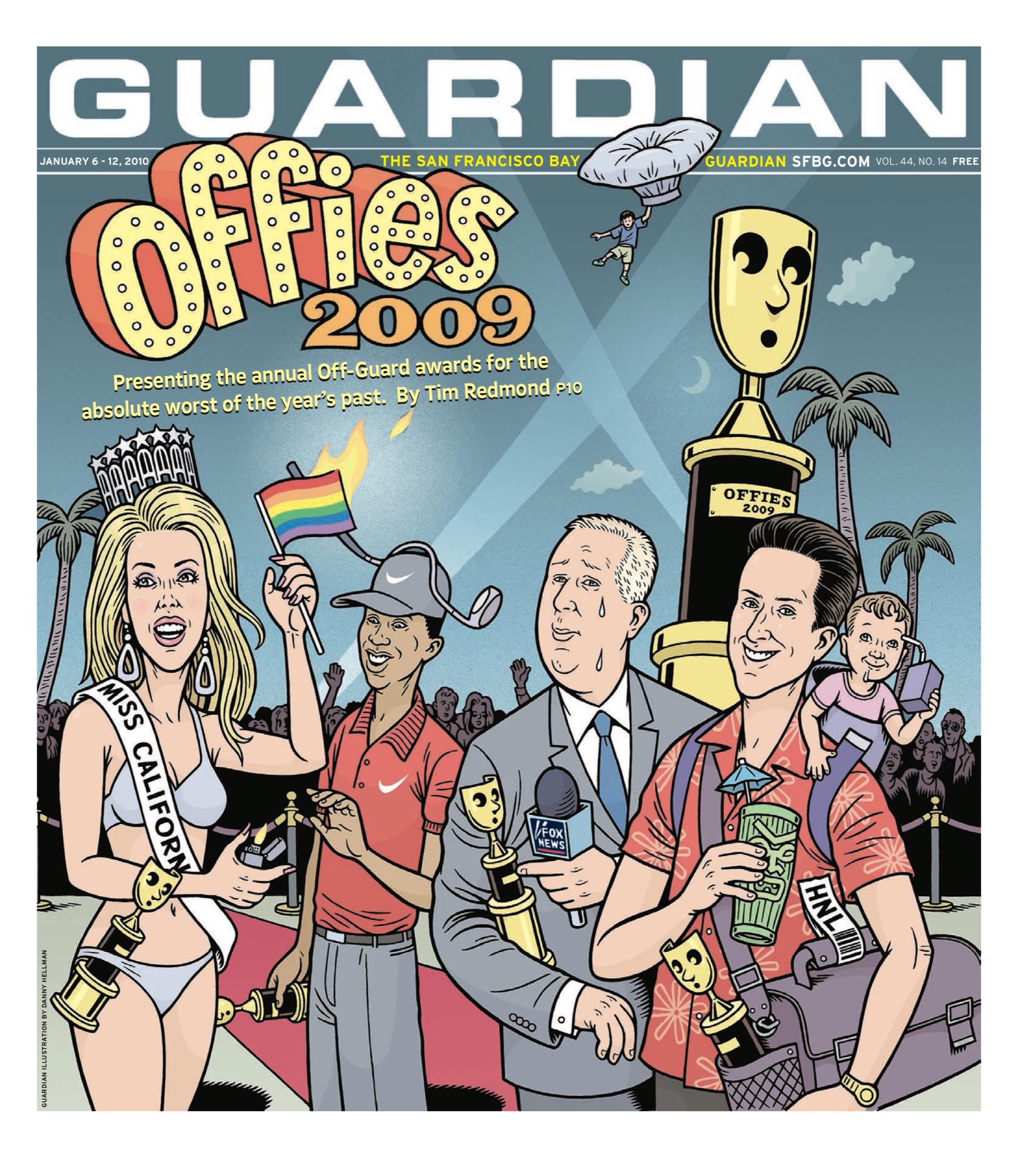The company that owns SF Weekly is positioning itself to become the greatest deadbeat in the history of the alternative press.
Village Voice Media, the 16-paper chain, owes the Bay Guardian close to $20 million as the result of a year-old jury verdict in a predatory-pricing lawsuit.
After a six-week trial in the spring of 2008, the jury found that the Weekly had intentionally sold ads below cost over a period of years, losing millions in the process, in an effort to put the locally owned competitor out of business.
But while the case is on appeal, VVM hasn’t posted an appeal bond — that is, a guarantee that the defendant will pay up after the appeals are over. That’s highly unusual for a business that isn’t claiming insolvency – and since there’s no bond, the Guardian is free to start collecting the money.
However, the Guardian lawyers have gotten a clear message from VVM’s legal team in a variety of communications over the past months. In a July 18, 2008 legal filings and subsequent disclosures, VVM claims that it owes a consortium of banks, led by the Bank of Montreal, $92 million — and that those banks have a prior claim on all of the company’s assets.
That suggests that the entire chain is worth less than $92 million — something that stretches credibility even in these difficult economic times. In 2007, the company listed assets of $191 million, documents presented during the trial showed.
If the current claim is true, then VVM has lost more than half its value in just two years and is technically underwater, much like the homeowners whose mortgages exceed the value of their property.
The VVM lawyers are also claiming that the company’s assets are set up in such a way that the Guardian will never be able to reach the money.
That leaves the largest alternative newspaper publisher in America in the remarkable position of saying that it’s prepared to duck a legitimate debt, to defy a jury and court order and hide its assets — like a media version of Bernard Madoff.
Asset-protection is a booming area of law, and in some cases, it’s considered entirely appropriate and ethical. Plenty of businesses — and increasingly, surgeons, dentists and others subject to a high risk of lawsuits — set up subsidiary companies, limited liability companies and other corporate structures to protect them from potential creditors.
But creating such a scheme to avoid paying a valid debt, particularly a court judgment, is frowned on both by legal experts and courts.
“It is never ethical to devise or implement a scheme to deprive a legitimate creditor of access to your assets,” Marjorie Jobe, an El Paso, Texas business litigation attorney and an expert on asset protection, told us by email. “It is never ethical not to pay or satisfy a legitimate debt.”
Adds Jay Adkisson, a Newport Beach lawyer and the author of a leading book on asset-protection: “Typically, it is considered unethical to transfer assets to harm a legitimate creditor.”
There are, experts point out, asset-protection programs that are both legal and ethical — and while Jacob Stein, a Los Angeles attorney who lectures regularly on the topic, told us there’s no “bright line,” it typically depends on the timing.
“If a business has a legitimate reason for setting up an asset-protection plan, that’s entirely proper,” Stein told us. “But if it’s done after a judgment is in place, it’s not a good idea.”
Added Jobe: “the asset protection plan needs to be deliberate and not aimed at only one creditor.”
At this point, only VVM executives and their lawyers and bankers know for sure when the asset-protection scheme was devised. The Guardian‘s legal action began in 2002; if the program had been in place prior to that, it would be easier to defend. But if money is moved out of a company to frustrate a creditor, that can run afoul of laws that govern improper transfers.
“If you do something to stiff your creditors, the fraudulent transfer laws come into play,” Adkisson said.
When companies have debt that exceeds their ability to pay, a typical option is bankruptcy – that’s what more than 70 asbestos companies have done in the United States. Bankruptcy isn’t perfect for creditors, and there’s a lot of controversy over the practice, but at least it allows a court to supervise a plan to pay some of the debt. And in a bankruptcy, the shareholders of a corporation are wiped out.
In this case, VVM is placing itself in a strange and potentially perilous situation. The company is saying that it’s protected from any judgments, and thus from any creditors — meaning that any vendors, suppliers, contractors or other creditors that VVM decides to stiff would have no easy legal recourse.
But there’s no bankruptcy and as far as we know, the company is paying its other debts. So VVM is apparently seeking to stiff a single creditor – which in itself is a legal issue — and is doing so while the shareholders, including those who participated in an illegal predatory pricing scheme, pay no penalty at all.
The ultimate problem with these schemes is that, in the long run, they don’t always work. “There are very few ways to do this that are bulletproof,” Stein, who creates asset-protection programs for a living, explained. Instead, the experts tend to agree, asset-protection is mostly about delaying justice — it’s a way to make it expensive and time-consuming for a creditor to get to the money. It’s a legal game, a tactic to frustrate a less-well-funded individual or company by dragging the legal issues out even further.
“It’s my perspective that if a debtor has money, there’s a way to get to it,” Richard Goldstein, a lawyer and expert in collections, told us. And, of course, the Guardian is mounting an aggressive collection effort.
It’s quite a length to go to in an effort to avoid paying a competitor who was harmed by illegal pricing and predatory competition. “In the end,” Goldstein said, “there are only two ways to avoid a judgment. You can have no assets at all, or you can undermine your own business and your own company to make it hard for someone to collect a debt.”
Calls to the Bank of Bank of Montreal, were not returned by press time. However, VVM Executive Editor Mike Lacey posted a long response to our written questions on SF Weeky’s blog.
In between insults, he responded — sort of — to a few points we raised.
He said, for example:
“The case is on appeal. You are not entitled to a penny.”
That’s wrong. By law, if VVM had posted an appeal bond, The Guardian would be unable to collect until the appeals had run their course. Of course, a bond would guarantee that the Guardian ultimately would get the money if the verdict were upheld.
With no bond posted, the Guardian has every legal right to begin collecting the judgment.
Lacey states that “I’m not going to discuss our banking relationship with a miscreant who makes up slander. Perhaps your lawyers can enlighten you. (But if your lawyers have led you into a blind alley, do you really trust their insight?)”
Interesting comment, considering that our lawyers — Ralph Alldredge, Richard Hill and E. Craig Moody — not only won the case, in front of a jury, but won a California Lawyers of the Year award from California Lawyer magazine for the case, which the magazine called one of the most important lawsuits of the year.
Most of the rest of his statement is a rehash of the claims VVM threw out in court — all of which were proven false. The final word on those claims came from a jury of 12 San Franciscans, who agreed unanimously that Lacey’s company had engaged in illegal predatory pricing and awarded the Guardian damages.
PS: The other banks in the consortium led by Bank of Montreal are BNP Paribus, Brown Brothers Harriman & Co., Rabobank, U.S. Bank, Wells Fargo, and Westlb AG. If we hear from any of them we’ll let you know.









